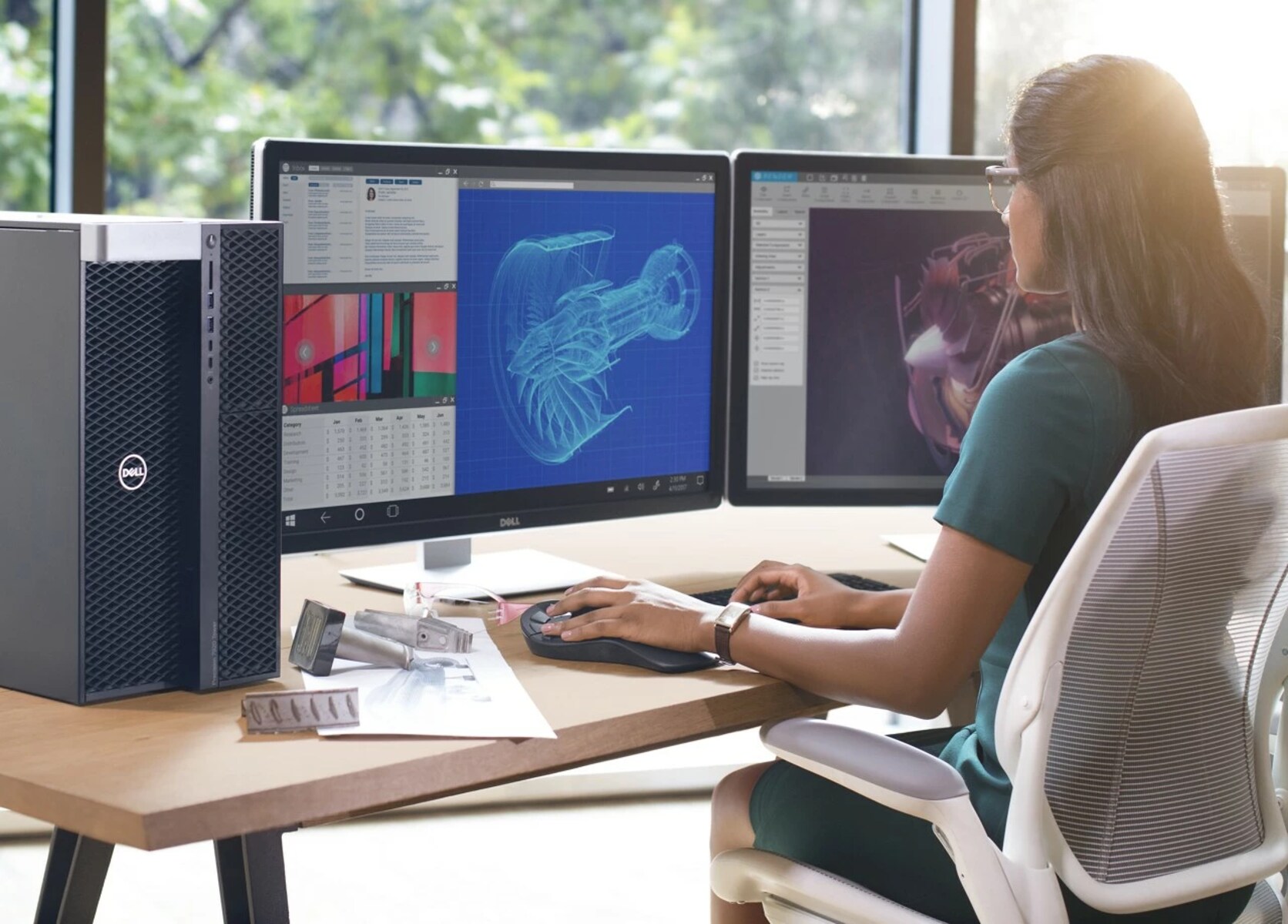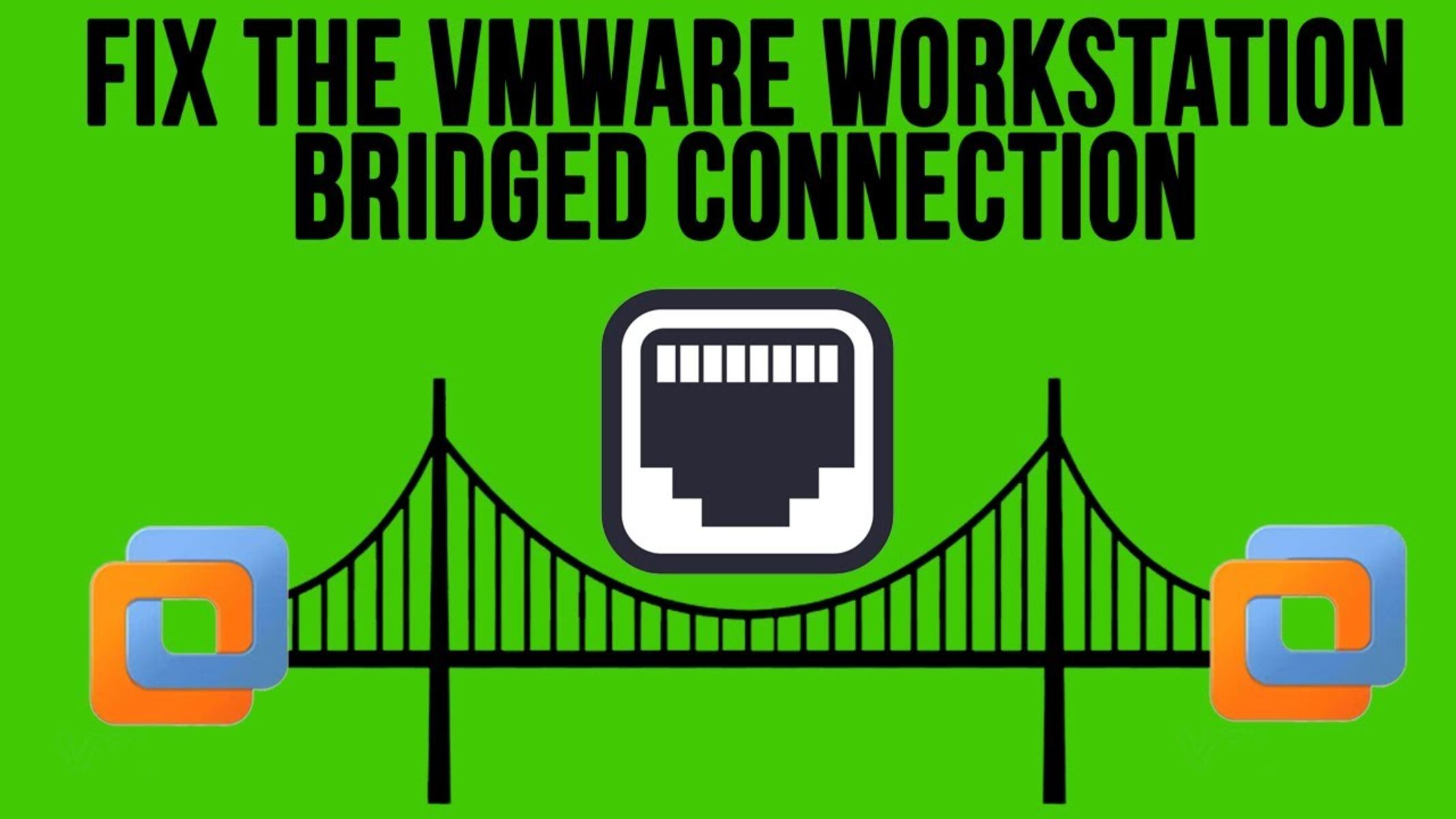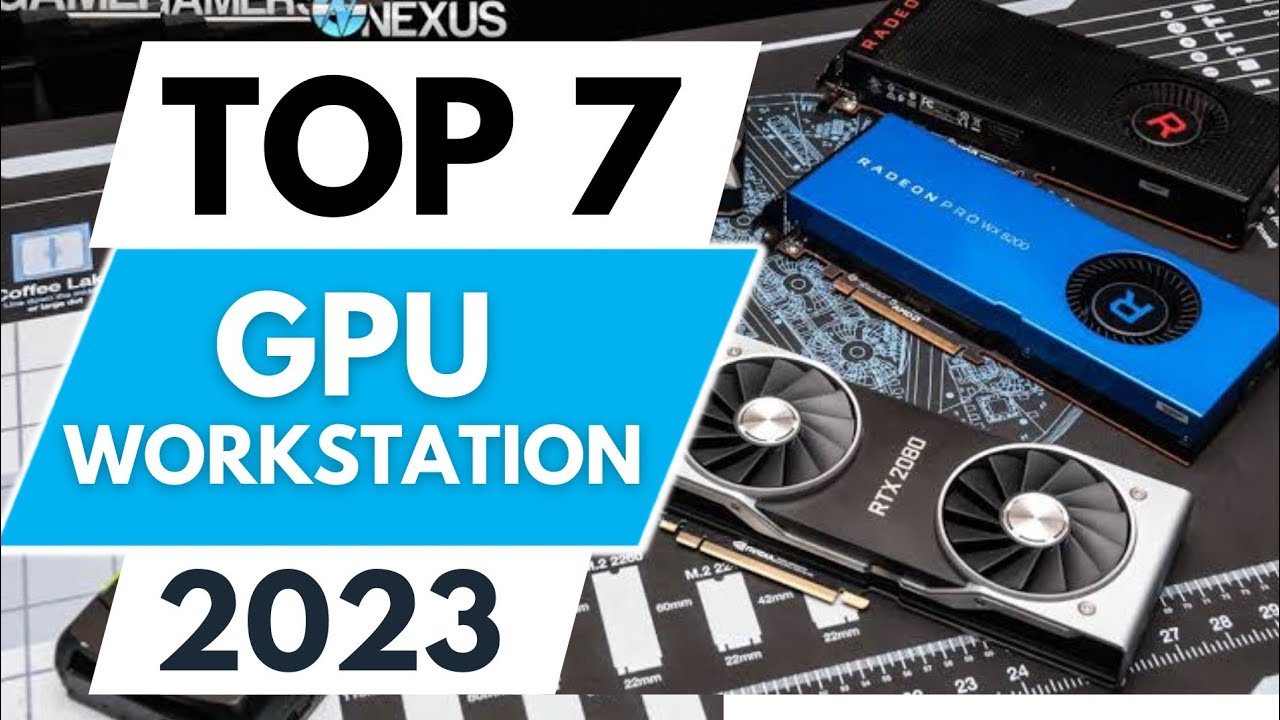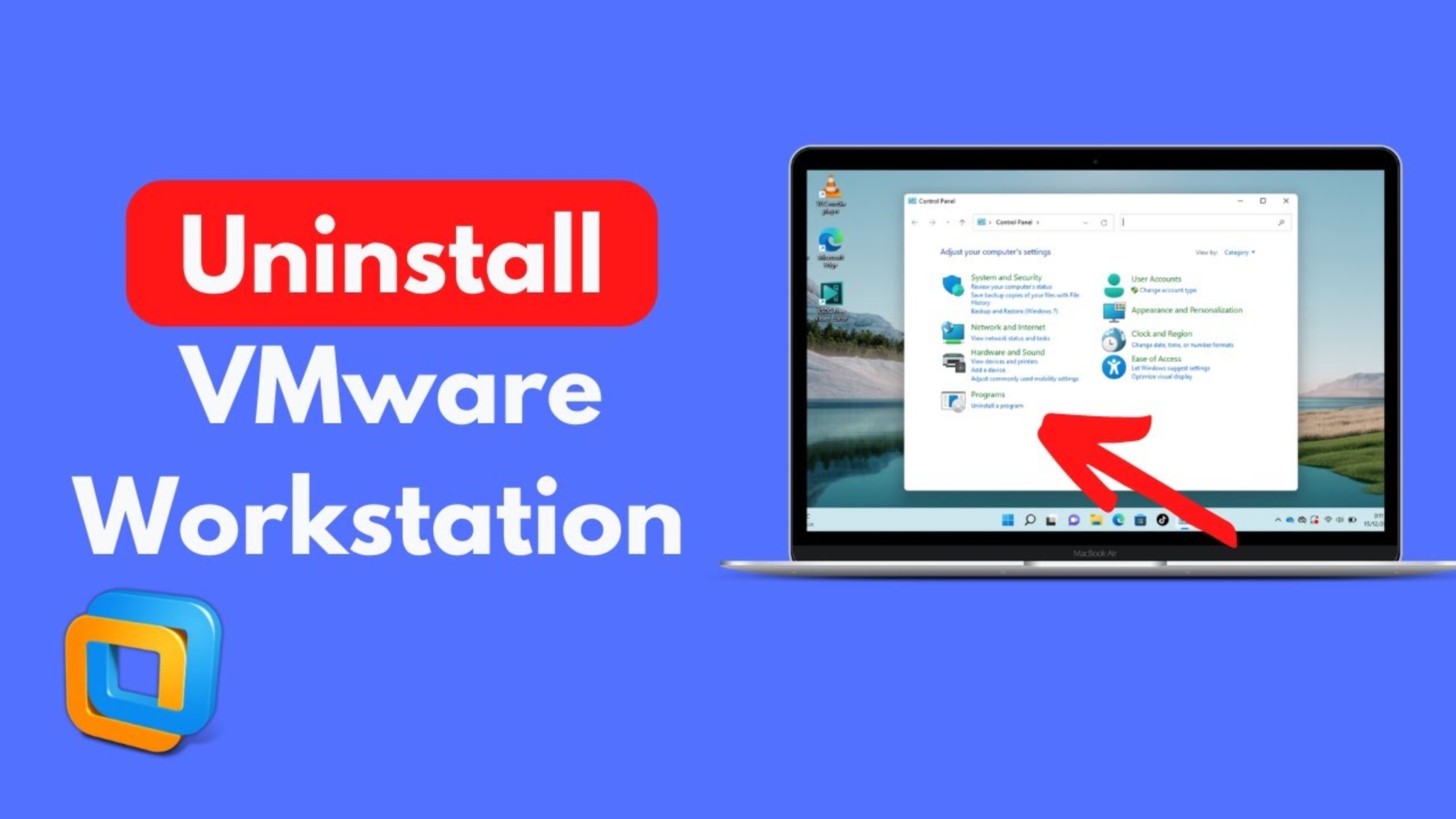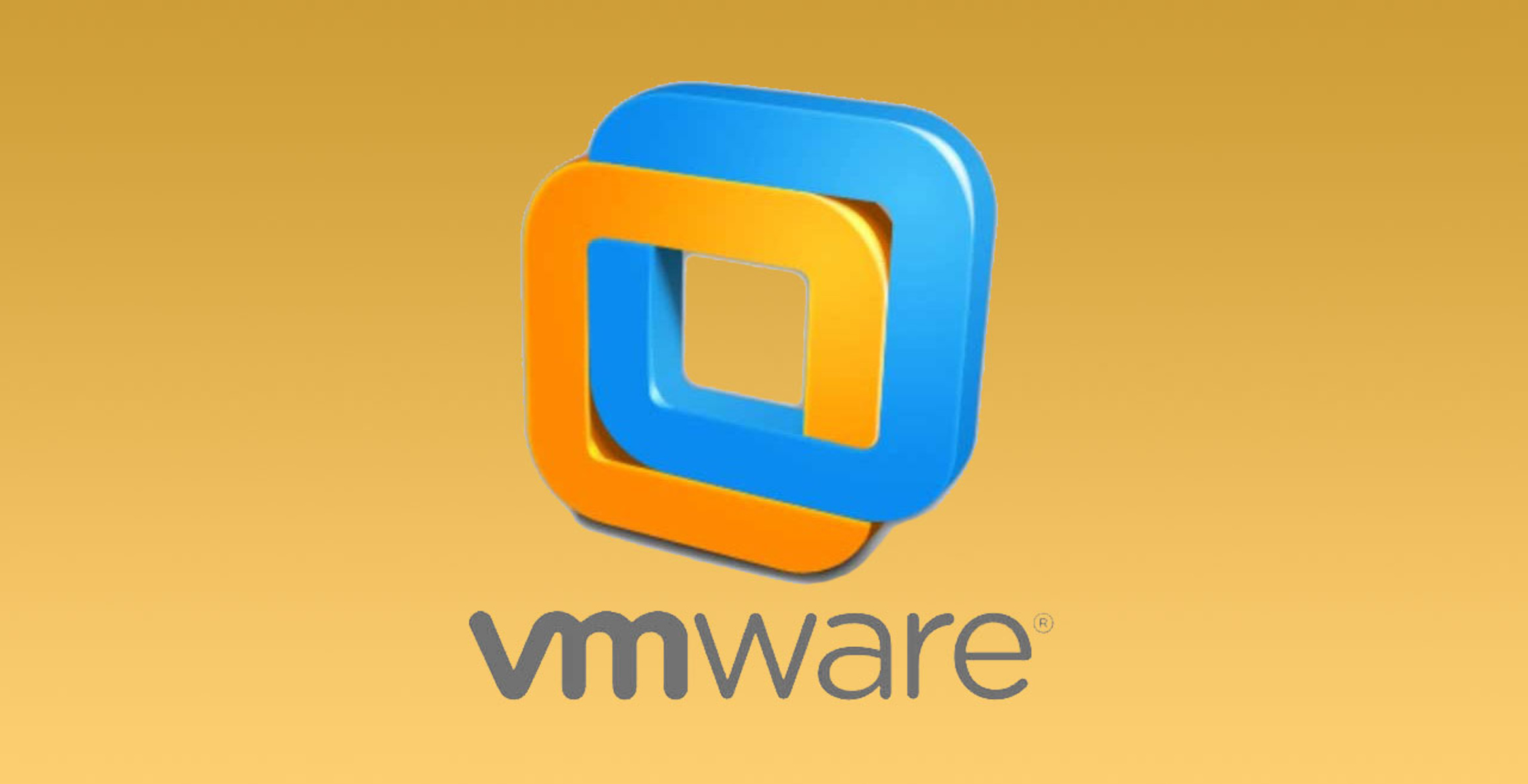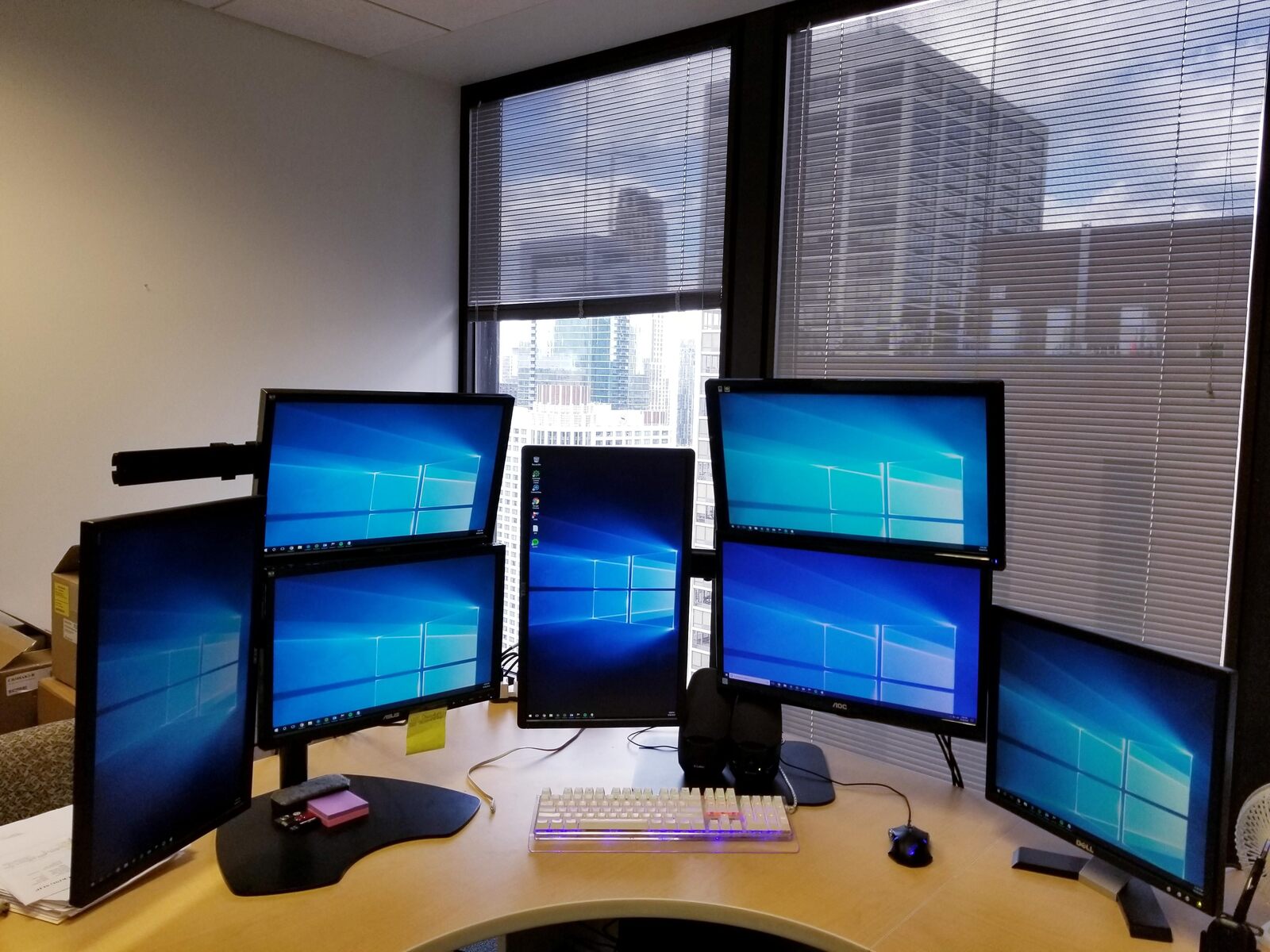Overview
Workstation Pro is a powerful virtualization solution that allows users to create and manage virtual machines on their desktop computers. Developed by VMware, Workstation Pro provides advanced features and functionality for professionals and enthusiasts in various fields, including software development, IT operations, and testing.
With Workstation Pro, users can run multiple operating systems simultaneously on a single physical machine. This enables them to efficiently test software in different environments, isolate and troubleshoot issues, and explore the capabilities of new operating systems without the need for dedicated hardware.
One of the key advantages of Workstation Pro is its ability to create and run virtual machines with different configurations. Users can customize hardware settings such as CPU, memory, and storage to match the requirements of their specific use cases. They can also allocate networking resources and manage virtual networks to facilitate communication between virtual machines and the host system.
Workstation Pro offers a user-friendly interface that makes it easy to create, manage, and navigate virtual machines. It provides a range of tools and features that enhance productivity and efficiency. Snapshots allow users to capture the state of a virtual machine at a specific point in time, enabling easy rollback or comparison. Cloning allows for the rapid creation of identical copies of virtual machines for testing or deployment purposes.
Collaboration and sharing are made simple with Workstation Pro. Users can share virtual machines and their associated configurations with teammates or clients, facilitating collaboration and accelerating development processes. Workstation Pro also supports integration with VMware vSphere, enabling seamless migration of virtual machines between local desktops and remote servers.
Performance optimization is a key focus of Workstation Pro. The software provides features such as virtual machine encryption, which ensures that sensitive data remains secure. Users can also leverage the power of their host machine by allocating CPU and memory resources to virtual machines as needed. Workstation Pro supports high-resolution displays and provides advanced graphics capabilities, enabling users to run graphics-intensive applications with ease.
In summary, Workstation Pro is a feature-rich virtualization solution that empowers users to create, manage, and explore virtual machines on their desktop computers. Its numerous features, intuitive interface, and robust performance make it an ideal choice for professionals and enthusiasts seeking a versatile and powerful virtualization platform.
Features of Workstation Pro
Workstation Pro offers a wide range of features that make it a top choice for virtualization. Whether you’re a software developer, IT professional, or enthusiast, these features will enhance your productivity and allow you to unleash your creativity.
- Multi-OS Support: With Workstation Pro, you can run multiple operating systems simultaneously on a single machine. This allows you to test and develop software across different platforms without the need for additional hardware.
- Customizable Virtual Hardware: Tailor the virtual machine’s hardware configuration to meet your specific needs. Adjust CPU, memory, and storage settings to optimize performance for your applications.
- Advanced Networking: Workstation Pro enables you to create virtual networks and simulate various network conditions. This allows you to test networked applications and troubleshoot network issues within a controlled environment.
- Snapshots and Cloning: Capture the state of a virtual machine at a specific moment with snapshots. Easily revert to a previous snapshot or compare different configurations. Cloning allows for quick replication of virtual machines, saving time during development and testing processes.
- Shared Virtual Machines: Collaborate with teammates or clients by sharing virtual machines. Simplify the process of distributing and sharing development environments, ensuring consistency and efficient collaboration.
- VMware vSphere Integration: Seamlessly connect to VMware vSphere, enabling you to run, manage, and migrate virtual machines across local and remote environments.
- Optimized Performance: Workstation Pro leverages the power of your host machine, allowing you to allocate CPU and memory resources to virtual machines as needed. This ensures high performance for resource-intensive applications.
- Enhanced Graphics: Utilize advanced graphics capabilities to run graphics-intensive applications smoothly. Enjoy support for high-resolution displays, providing a crisp and visually immersive experience.
- Secure and Isolated Environment: Workstation Pro offers virtual machine encryption, ensuring the security of sensitive data. Create isolated environments for testing, eliminating the risk of affecting the host machine or other virtual machines.
These are just a few of the many features that make Workstation Pro the go-to virtualization software for professionals. With its versatility, performance optimization, and collaborative capabilities, Workstation Pro empowers users to push the boundaries of what’s possible within a virtualized environment.
Benefits of using Workstation Pro
Workstation Pro offers numerous benefits that make it a valuable tool for professionals and enthusiasts in various industries. By leveraging the powerful features and functionality of Workstation Pro, users can unlock new possibilities and enhance their productivity.
- Efficient Software Testing: With Workstation Pro, you can create and run multiple virtual machines, allowing you to test software across different operating systems and configurations without the need for additional hardware. This streamlines the testing process and ensures compatibility across platforms.
- Cost Savings: By eliminating the need for dedicated hardware, Workstation Pro helps reduce costs associated with acquiring and maintaining physical machines. Instead, you can efficiently utilize the resources of your existing computer to run virtual machines.
- Enhanced Productivity: Workstation Pro’s intuitive interface and powerful features simplify virtual machine management, saving you valuable time. Whether it’s creating, cloning, or managing snapshots, Workstation Pro accelerates your workflows, allowing you to focus on your work.
- Secure Development Environments: Workstation Pro provides a secure and isolated environment for software development and testing. You can create isolated virtual machines to test applications without compromising the stability and security of your host machine.
- Flexible Work Environments: Workstation Pro allows you to customize virtual machines to suit specific project requirements. This flexibility enables you to experiment with different configurations, software versions, and network setups, creating a tailored environment for your projects.
- Collaboration Made Easy: Workstation Pro’s sharing and collaboration features enable seamless sharing of virtual machines, configurations, and development environments. This promotes teamwork and facilitates collaboration among team members, regardless of their physical locations.
- Effortless Migration: Workstation Pro integrates with VMware vSphere, allowing easy migration of virtual machines between local desktops and remote servers. This simplifies the process of moving development environments to production or staging servers.
- Rapid Application Deployment: Using Workstation Pro, you can clone virtual machines to create identical copies efficiently. This significantly speeds up the deployment process, ensuring quick setup for testing, demonstrations, or customer deliveries.
- Advanced Virtual Networking: Workstation Pro offers advanced networking capabilities, allowing you to simulate complex network configurations and test networked applications in a controlled environment. This ensures that your applications are reliable and perform optimally in various network scenarios.
- Extensive Hardware Compatibility: Workstation Pro is designed to work seamlessly with a wide range of hardware configurations. It supports the latest processors, graphics cards, and peripherals, providing you with the flexibility to choose your preferred hardware while ensuring optimal performance.
These benefits highlight the value of Workstation Pro in enhancing productivity, efficiency, and collaboration for professionals across different industries. Whether you’re a developer, IT professional, or enthusiast, Workstation Pro empowers you to unlock the full potential of virtualization.
System Requirements
Before installing Workstation Pro, it is essential to ensure that your computer meets the necessary system requirements. This will ensure smooth operation and optimal performance of the virtualization software.
Here are the minimum system requirements for running Workstation Pro:
- Operating System: Workstation Pro is compatible with Windows, Linux, and select versions of macOS. Make sure your operating system is supported and up to date.
- Processor: A 64-bit x86 or x64 processor with at least two cores is required. Virtualization technology, such as Intel VT-x or AMD-V, must be enabled in the BIOS settings.
- Memory (RAM): The minimum recommended memory is 4GB, but for optimal performance, at least 8GB of RAM is recommended.
- Disk Space: Ensure that you have sufficient disk space to install Workstation Pro and allocate space for virtual machines. The software requires a minimum of 1.5GB of free disk space.
- Graphics Card: A compatible graphics card with support for DirectX 11 is necessary to leverage the advanced graphics capabilities of Workstation Pro.
- Networking: An Ethernet or wireless adapter is required for networking features and connectivity with virtual machines.
It’s important to note that these are the minimum system requirements, and the actual requirements may vary depending on the number of virtual machines you intend to run simultaneously and the resources allocated to each virtual machine. Larger, resource-intensive virtual machines may require more powerful hardware configurations.
Additionally, it is crucial to regularly check for updates to both your operating system and Workstation Pro to ensure compatibility and security. Keeping your software up to date with the latest patches and updates will help optimize performance and mitigate any potential vulnerabilities.
By ensuring that your computer meets the required system specifications, you can enjoy a seamless and powerful virtualization experience with Workstation Pro.
Getting Started with Workstation Pro
Getting started with Workstation Pro is a simple and straightforward process, whether you are new to virtualization or an experienced user. This section will guide you through the initial setup and provide step-by-step instructions to help you start using Workstation Pro efficiently.
1. Download and Install:
Begin by downloading the latest version of Workstation Pro from the official VMware website. Once the download is complete, run the installer and follow the on-screen instructions to install the software on your computer. Make sure to select the appropriate installation options that align with your requirements.
2. License Activation:
After installation, you will be prompted to activate your license. Enter the license key provided by VMware to validate your installation. Ensure that you have a valid license key or a trial key to continue using Workstation Pro beyond the evaluation period.
3. Creating a New Virtual Machine:
Once Workstation Pro is installed and activated, you can start creating virtual machines. Click on the “Create a New Virtual Machine” option on the main screen or navigate to the “File” menu and select “New Virtual Machine.” Follow the wizard to set up your virtual machine, including selecting the operating system, specifying resource allocations, and configuring storage options.
4. Installing an Operating System:
After creating a virtual machine, you will need to install an operating system. If you have an installation disk or an ISO file of the operating system, you can attach it to the virtual machine and install it as you would on a physical machine. Alternatively, you can use the “Easy Install” feature for supported operating systems, which automates the installation process.
5. Configuring Virtual Machine Settings:
Customize the hardware and network settings of your virtual machine according to your needs. Modify parameters such as CPU, memory, storage, and networking to optimize performance and ensure compatibility with your applications and workflow. Workstation Pro provides a user-friendly interface to make these modifications effortlessly.
6. Powering On and Using Virtual Machines:
Once your virtual machine is configured, you can power it on by selecting it from the list of virtual machines in Workstation Pro. The virtual machine will start, and you can interact with it as you would with a physical machine. Install software, perform testing, and carry out your desired tasks within the virtual machine environment.
7. Managing Virtual Machines:
Workstation Pro provides a range of management features, such as taking snapshots, suspending, resuming, and cloning virtual machines. Familiarize yourself with these options to efficiently manage your virtual machine fleet and ensure that you can revert to previous states or create duplicates as needed.
By following these steps, you will be well on your way to using Workstation Pro and harnessing the power of virtualization to improve productivity, streamline testing, and explore new possibilities without compromising system stability or requiring additional hardware.
Installing Workstation Pro
Installing Workstation Pro on your computer is a simple process that can be completed in just a few steps. This section will guide you through the installation process, ensuring that you have the software up and running in no time.
1. Download Workstation Pro:
Start by downloading the installation file for Workstation Pro from the official VMware website. Choose the appropriate version based on your operating system. Make sure to download the latest version to take advantage of the latest features and bug fixes.
2. Launch the Installer:
Once the download is complete, locate the installation file on your computer and double-click on it to launch the installer. Depending on your operating system, this may involve running an executable file or mounting an installation disk image.
3. Review the End-User License Agreement (EULA):
Before proceeding with the installation, you will be presented with the End-User License Agreement. Take the time to read through the agreement, and if you agree to the terms and conditions, click on the checkbox to indicate your acceptance. Proceed to the next step.
4. Select Installation Options:
During the installation process, you will be prompted to select the installation options. Choose the desired options, such as the installation location and whether to install any additional components or features. Ensure that the selected options align with your requirements and preferences.
5. Enter the License Key:
After configuring the installation options, you will be prompted to enter your license key. If you have purchased a license for Workstation Pro, enter the key in the provided field. If you are using a trial version, you can proceed without a license key to evaluate the software.
6. Begin the Installation:
Once the license key (or lack thereof) is entered, click on the “Install” button to begin the installation process. Workstation Pro will proceed to install the software on your computer based on the selected options. This may take a few minutes, so be patient and wait for the installation to complete.
7. Complete the Installation:
Once the installation process is finished, you will be notified that Workstation Pro has been successfully installed on your computer. You can then choose to launch the software immediately or close the installer and manually launch Workstation Pro later.
Congratulations! You have successfully installed Workstation Pro on your computer. You can now begin creating and managing virtual machines, exploring the powerful features and functionalities that Workstation Pro has to offer.
Remember to periodically check for updates to Workstation Pro to ensure that you have the latest version installed, complete with the latest features and security patches. Keeping the software up to date will help optimize performance and ensure a smooth virtualization experience.
Setting up Virtual Machines
Setting up virtual machines is a fundamental task when using Workstation Pro. Whether you want to run a guest operating system for testing or create a development environment, configuring virtual machines with the desired settings is essential. This section will guide you through the process of setting up virtual machines using Workstation Pro.
1. Creating a New Virtual Machine:
To begin, open Workstation Pro and click on the “Create a New Virtual Machine” option on the main screen. Alternatively, go to the “File” menu and select “New Virtual Machine.” This will launch a wizard that will guide you through the virtual machine creation process.
2. Guest Operating System:
Choose the guest operating system you want to install on the virtual machine. Workstation Pro offers a wide range of options, from various versions of Windows, Linux distributions, and even macOS. Select the correct operating system and version to proceed.
3. Configuration and Resource Allocation:
Specify the virtual machine’s hardware settings, such as the number of CPU cores, the amount of memory (RAM), and virtual disk size. Adjust these settings based on the requirements of your guest operating system and the applications you plan to run.
4. Virtual Disk:
Configure the virtual disk for the virtual machine. You can create a new virtual disk or use an existing one. Specify the size of the virtual disk and choose the disk format that best suits your needs.
5. Network Configuration:
Configure the network settings for the virtual machine. Choose the appropriate network type, including bridged, NAT, or host-only networking. This determines how the virtual machine will connect to the network and interact with other devices.
6. Installation Media:
Provide the installation media for the guest operating system. This can be an installation disk or an ISO file. Attach the media to the virtual machine to initiate the installation process.
7. Customization Options:
You may have the option to customize additional settings for the virtual machine, such as enabling or disabling certain features, adjusting display resolution, configuring USB devices, or setting up shared folders. Review these options and make the necessary adjustments based on your requirements.
8. Completing the Setup:
Once you have completed the necessary configurations for the virtual machine, review the summary screen to ensure all settings are correct. If everything looks good, click on the “Finish” button to create the virtual machine.
Congratulations! You have successfully set up a virtual machine using Workstation Pro. At this point, you can power on the virtual machine and proceed with the installation of the guest operating system. Follow the prompts on the virtual machine’s console to complete the installation process.
Remember, you can create multiple virtual machines using the same process, enabling you to work with different operating systems and environments simultaneously. Workstation Pro provides a user-friendly interface to manage and access your virtual machines, allowing you to switch between them effortlessly and efficiently.
Take advantage of the flexibility and power of Workstation Pro to create, configure, and manage your virtual machines with ease.
Configuring Virtual Networks
Virtual networks are an essential component of Workstation Pro that allow virtual machines to communicate with each other and the host system. Configuring virtual networks correctly ensures seamless connectivity and enables various networking capabilities within virtualized environments. This section will guide you through the process of configuring virtual networks using Workstation Pro.
1. Network Editor:
Start by launching the Network Editor in Workstation Pro. You can access it by navigating to the “Edit” menu and selecting “Virtual Network Editor.” This tool allows you to create and manage virtual networks.
2. Available Networks:
In the Network Editor, you will see a list of available networks. By default, Workstation Pro creates three virtual networks: Bridged, NAT, and Host-only. Each network has its own characteristics and uses, providing different levels of connectivity and isolation.
3. Bridged Networking:
Bridged networking connects the virtual machine to the physical network, enabling it to directly communicate with other devices on the network. Choose the appropriate network adapter from your host system to bridge the virtual machine’s network connection.
4. NAT Networking:
NAT networking allows the virtual machine to access the external network through the host system’s IP address. The host acts as a network address translator, providing connectivity to the virtual machine without exposing its IP address to the external network.
5. Host-only Networking:
Host-only networking creates a network that is isolated from the external network. The virtual machine can communicate with the host system and other virtual machines on the same host-only network. This network type is useful for creating private networks or for testing in a controlled environment.
6. Custom Network:
If the default network types do not meet your requirements, you can create custom networks. Custom networks offer more advanced networking options, such as VLAN tagging and custom IP addressing schemes. Specify the network settings, including subnet mask, gateway, and DHCP configuration, according to your needs.
7. Applying Network Changes:
After configuring the virtual networks to your liking, click on the “Apply” or “OK” button to save the changes. Workstation Pro will update the network configurations accordingly.
By configuring virtual networks in Workstation Pro, you can establish the desired connectivity and network environments for your virtual machines. Whether you need direct access to the physical network, a private network for isolated testing, or a combination of both, Workstation Pro provides the flexibility and tools to meet your networking needs.
Keep in mind that virtual network configurations may require adjustments in your guest operating systems to ensure proper network connectivity. Be sure to configure the network settings within the guest operating systems to match the virtual network configurations in Workstation Pro.
With properly configured virtual networks, you can create complex and realistic network environments, test networked applications, and facilitate seamless communication between virtual machines and the host system.
Snapshots and Cloning
Snapshots and cloning are powerful features in Workstation Pro that allow you to efficiently manage and replicate virtual machine configurations. Snapshots capture the state of a virtual machine at a specific point in time, while cloning creates identical copies of a virtual machine. These features provide a convenient way to restore previous states, compare configurations, and rapidly deploy multiple virtual machines with ease. Let’s explore how to use snapshots and cloning in Workstation Pro.
1. Snapshots:
To create a snapshot, select the virtual machine you want to snapshot from the Workstation Pro interface and navigate to the “Snapshot” menu. Choose “Take a Snapshot” to capture the current state of the virtual machine. Give the snapshot a descriptive name to easily identify it in the future.
You can take multiple snapshots at different stages of the virtual machine’s lifecycle. This allows you to revert back to a specific snapshot if you encounter issues, test different configurations, or compare the performance of the virtual machine at various points in time.
2. Snapshot Manager:
Workstation Pro provides a Snapshot Manager that allows you to view, manage, and interact with snapshots. Open the Snapshot Manager by selecting the desired virtual machine and going to the “Snapshot” menu. From there, you can revert to a previous snapshot, delete snapshots, or create new ones.
Use the Snapshot Manager to navigate through the snapshot tree and choose the desired point in time to restore the virtual machine’s state. This flexible feature allows you to easily switch between different configurations or quickly recover from unexpected issues.
3. Cloning:
Cloning a virtual machine creates an identical copy of the original, including its configuration and disk contents. This is useful when you need to create multiple instances of the same virtual machine for testing, deployment, or distribution purposes.
To clone a virtual machine, select it in the Workstation Pro interface and go to the “Clone” menu. Choose “Clone to New Virtual Machine” and provide a name for the new virtual machine. You can choose to either create a full clone that includes all virtual disks or a linked clone that shares the virtual disk with the original virtual machine.
Cloning saves time and resources by avoiding the need to recreate virtual machines from scratch. It provides a quick and efficient way to deploy multiple instances of identical virtual machines while maintaining consistency and minimizing disk space usage.
4. Managing Clones:
After making a clone, the new virtual machine is fully independent and can be customized or modified as needed. You can power on the clone, install software, and configure it independently from the original virtual machine.
If changes are made to the original virtual machine after the clone is created, the changes are not reflected in the clone. This ensures that the clone remains separate and unaffected by subsequent modifications to the original virtual machine.
By leveraging the power of snapshots and cloning in Workstation Pro, you can easily manage and manipulate virtual machine configurations. Snapshots allow for flexible state management, while cloning simplifies the process of creating multiple instances. These features enhance productivity, streamline testing and deployment workflows, and offer valuable flexibility in managing virtual machines efficiently.
Sharing and Collaboration
Workstation Pro provides robust features that facilitate sharing and collaboration, allowing users to seamlessly collaborate with team members or clients. Whether you need to share virtual machines, collaborate on development environments, or demonstrate software to stakeholders, Workstation Pro offers various tools and capabilities to enhance teamwork and streamline collaboration processes.
1. Shared Virtual Machines:
Workstation Pro allows you to share virtual machines with others, making it easy to distribute development environments, prototypes, or software demonstrations. You can package a virtual machine into a single file and share it via email, file sharing services, or network drives. The recipient can then open and run the virtual machine directly in their own Workstation Pro instance.
This feature promotes collaborative development, allowing team members or clients to work together in the same virtual environment. It ensures consistency, eliminates compatibility issues, and streamlines feedback and iteration processes.
2. Collaboration with Teams:
Workstation Pro integrates with VMware’s Team Collaboration feature, which enables multi-user collaboration on shared virtual machines. Team members can collaborate on development, testing, or troubleshooting in real-time, even if they are working in different geographical locations.
Team Collaboration improves efficiency by allowing team members to work concurrently on the same virtual machine, eliminating the need to transfer files or switch between individual machines. It fosters collaboration and enhances productivity by enabling easy communication and simultaneous problem-solving.
3. Integration with VMware vSphere:
Workstation Pro seamlessly integrates with VMware vSphere, a powerful server virtualization platform. This integration enables remote collaboration and simplifies the process of migrating virtual machines between local desktops and remote servers.
By leveraging the integration with vSphere, you can share virtual machines with other users across the network, ensuring consistent environments and streamlined collaboration. It also enables easy migration of virtual machines to production environments or centralized servers, providing scalability and flexibility as your projects grow.
4. Easy Access and Availability:
Virtual machines created in Workstation Pro can be accessed and run on other VMware products, such as VMware Fusion for Mac or VMware Workstation Player for Windows and Linux. This interoperability ensures that virtual machines can be easily shared across different platforms, expanding collaboration opportunities across diverse environments.
The ability to share and collaborate on virtual machines is not only beneficial for development teams but also valuable for support and training scenarios. Workstation Pro’s sharing and collaboration features empower users to engage with others, seek feedback, and foster collaboration to achieve better results.
Workstation Pro breaks down barriers and enhances collaboration by providing tools and features that simplify the sharing of virtual machines and enable real-time collaboration. Embrace the power of sharing and collaboration within Workstation Pro to boost productivity and foster effective teamwork.
Performance Optimization
Workstation Pro offers various performance optimization options to ensure that your virtual machines run smoothly and efficiently. By taking advantage of these features, you can enhance the performance of your virtualized environments, improve resource utilization, and optimize the overall experience with Workstation Pro.
1. Resource Allocation:
Workstation Pro allows you to allocate CPU and memory resources to your virtual machines according to their specific needs. By adjusting resource settings, you can ensure that virtual machines have the necessary processing power and memory to run applications efficiently without overburdening the host system.
Consider the requirements of your virtual machines and the workload they will handle. Allocate CPU cores and memory size accordingly, ensuring that each virtual machine receives adequate resources without causing performance degradation on the host or other running virtual machines.
2. Virtual Machine Encryption:
Protecting sensitive data is crucial in any virtualized environment. Workstation Pro offers virtual machine encryption, allowing you to encrypt the virtual machine’s disk and provide an additional layer of security. This ensures that even if unauthorized access occurs, the data remains encrypted and protected.
Enable virtual machine encryption when creating new virtual machines or encrypt existing virtual machines to safeguard valuable data and adhere to security best practices.
3. Enhanced Graphics Support:
Workstation Pro provides advanced graphics support, enabling virtual machines to utilize the host system’s graphics hardware. This allows you to run graphics-intensive applications smoothly within the virtualized environment.
Make sure to install the appropriate graphics drivers in the guest operating system to take full advantage of hardware acceleration. Adjust the graphics settings within Workstation Pro to allocate sufficient resources for optimal graphics performance.
4. High-Resolution Display Support:
If you are using a high-resolution display, Workstation Pro offers support to provide a crisp and visually immersive experience. Configure the virtual machine’s display settings to match the resolution of your monitor for clear and sharp visuals.
Running virtual machines at the native resolution of your display ensures that text, images, and graphical elements appear sharp and legible, enhancing the overall user experience within the virtualized environment.
5. Advanced Configuration Tweaks:
Workstation Pro provides advanced configuration options that allow experienced users to further optimize their virtual machines. These options include adjusting virtual machine settings such as CPU hot-plugging, memory optimization, and network throttling.
It is recommended to consult the Workstation Pro documentation or VMware’s knowledge base to explore additional tweaks and optimization techniques for specific use cases, ensuring the best performance for your virtual machines.
By optimizing performance in Workstation Pro, you can create a stable and responsive virtualized environment. Allocate resources appropriately, enable encryption for data security, optimize graphics settings, utilize high-resolution displays effectively, and consider advanced configuration tweaks. These measures ensure that your virtual machines perform at their best, providing a seamless and efficient virtualization experience.
Advanced Features of Workstation Pro
Workstation Pro offers a wide array of advanced features that enhance its functionality and provide users with advanced capabilities. These features unlock new possibilities and enable users to leverage the full potential of their virtualized environments. Let’s explore some of the advanced features available in Workstation Pro.
1. Linked Clones:
Linked clones are a powerful feature in Workstation Pro that enables the creation of virtual machines that share a virtual disk with the parent virtual machine. This results in significant disk space savings, as linked clones only require the storage space for the changes made from the parent virtual machine.
This feature is particularly useful when deploying multiple virtual machines with identical configurations, as it minimizes the amount of disk space needed and simplifies management. Linked clones allow for easy replication and scaling of virtual machine environments, saving both time and storage resources.
2. Teams and Team Tabs:
Workstation Pro includes a feature called Teams that allows you to organize and manage groups of related virtual machines. Teams provide a convenient way to consolidate virtual machines for a specific project, environment, or team.
Within a Team, you can use Team Tabs to group multiple virtual machines together in a tabbed interface, making it easier to switch between related virtual machines and manage them collectively. This simplifies the management of complex setups or interconnected environments.
3. Remote Connections:
Workstation Pro enables remote connections to virtual machines using industry-standard protocols such as VNC (Virtual Network Computing) and RDP (Remote Desktop Protocol). This allows you to access and control virtual machines from remote locations, providing flexibility and convenience.
Remote connections enable collaboration, support, and troubleshooting scenarios, even when the virtual machines are running on different physical machines. This feature enables remote access to virtual machines hosted on Workstation Pro, enhancing productivity and enabling remote work.
4. Command-Line Interface (CLI) Tools:
Workstation Pro provides a powerful command-line interface (CLI), allowing you to automate tasks, script operations, and perform advanced management tasks. The CLI provides granular control over virtual machine operations and configuration, giving advanced users and administrators a high level of flexibility.
The CLI allows for scripting and automation of tasks such as deploying virtual machines, configuring networks, and managing snapshots. This feature enables efficient management and scalability, providing a platform for advanced customization and integration with other systems.
5. Integration with Development Tools:
Workstation Pro seamlessly integrates with development tools and platforms, enabling developers to efficiently work within a virtualized environment. The software supports integration with popular IDEs (Integrated Development Environments) and tools, allowing for seamless debugging, testing, and deployment.
Integrating with development tools ensures that developers can build, test, and debug their applications in the same environment they will be deployed in, reducing compatibility issues and streamlining the development process. This feature supports various development workflows and enhances productivity for software development teams.
These advanced features expand the capabilities of Workstation Pro, providing users with the tools and functionalities needed to tackle complex projects, streamline management, and optimize workflows. By exploring and utilizing these advanced features, users can achieve greater efficiency and flexibility within their virtualized environments.
Troubleshooting and Support
Workstation Pro offers a range of resources and support options to help users troubleshoot issues, find solutions, and maximize their experience with the software. From online documentation and forums to official support channels, Workstation Pro ensures that users have access to the necessary resources to address any challenges that may arise. Let’s explore the troubleshooting and support options available:
1. Online Documentation:
Workstation Pro provides comprehensive online documentation that covers various aspects of the software, including installation, configuration, and troubleshooting. The documentation offers step-by-step guides, troubleshooting tips, and detailed explanations of Workstation Pro’s features and settings.
Users can access the online documentation to find answers to common questions, explore advanced features, and troubleshoot issues they may encounter during their virtualization journey.
2. Knowledge Base:
VMware maintains a vast knowledge base that contains articles, guides, and solutions for common issues and challenges faced by Workstation Pro users. The knowledge base is continually updated and provides a wealth of information on troubleshooting, configuration, and optimization techniques.
Users can search the knowledge base to find solutions to specific problems or explore recommended practices to optimize their virtualized environments.
3. Community Forums:
Workstation Pro has an active community of users who frequently share their experiences, insights, and solutions on community forums. These forums provide a platform for users to ask questions, share tips, and engage in discussions related to Workstation Pro.
Users can participate in the forums, posting their queries, and seeking assistance from the community. It is common to find helpful responses and suggestions from experienced users and VMware experts.
4. Official Support:
Workstation Pro offers official support channels where users can reach out to VMware’s technical support team for assistance. Users with a valid support contract can submit support tickets, access 24/7 phone support, or engage in live chat sessions with qualified support professionals.
For more critical or complex issues, official support ensures that users have direct access to VMware’s expertise and resources for prompt and customized assistance.
5. Updates and Patches:
VMware regularly releases updates and patches for Workstation Pro to address bug fixes, compatibility issues, and security vulnerabilities. Keeping the software up to date with the latest updates and patches ensures a more stable and secure virtualization environment.
Users should regularly check for updates within the software or visit the VMware website to download and install the latest updates to Workstation Pro.
By leveraging these troubleshooting and support resources, users can overcome challenges, resolve issues, and optimize their experience with Workstation Pro. Whether it’s consulting online documentation, engaging with the active community, or reaching out to official support channels, Workstation Pro ensures that users have the necessary support and guidance throughout their virtualization journey.
Conclusion
Workstation Pro is a powerful and versatile virtualization solution that empowers users to create, manage, and explore virtual machines on their desktop computers. With its extensive features, intuitive interface, and robust performance, Workstation Pro offers professionals and enthusiasts a comprehensive platform for various applications.
From the initial setup and installation process to the advanced features such as snapshots, cloning, and networking configuration, Workstation Pro provides a user-friendly experience that allows users to harness the full potential of virtualization.
The benefits of using Workstation Pro are substantial. It enables efficient software testing, resulting in cost savings by eliminating the need for dedicated hardware. Workstation Pro enhances productivity through features like shared virtual machines and collaboration tools, allowing for seamless teamwork and easier demonstration of software environments.
Workstation Pro offers performance optimization options, allowing users to allocate resources appropriately, optimize graphics settings, and take advantage of high-resolution displays. With integrated support for advanced features, such as linked clones, Teams, remote connections, and command-line tools, Workstation Pro enables users to work efficiently and effectively within virtualized environments.
Users also have access to a range of troubleshooting and support resources, including online documentation, knowledge bases, community forums, and official support channels. These resources empower users to troubleshoot issues, find solutions, and maximize their experience with Workstation Pro.
Ultimately, Workstation Pro provides a comprehensive virtualization platform that meets the diverse needs of professionals and enthusiasts in various fields. It offers the flexibility, performance, and functionality required for software development, system testing, IT operations, and more.
With its continuous updates, advanced features, and strong support system, Workstation Pro remains a leading choice for virtualization, enabling users to unleash their creativity, enhance productivity, and explore new possibilities within virtualized environments.







